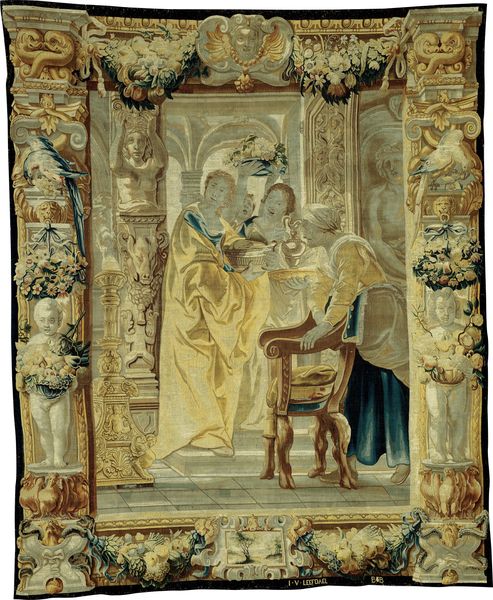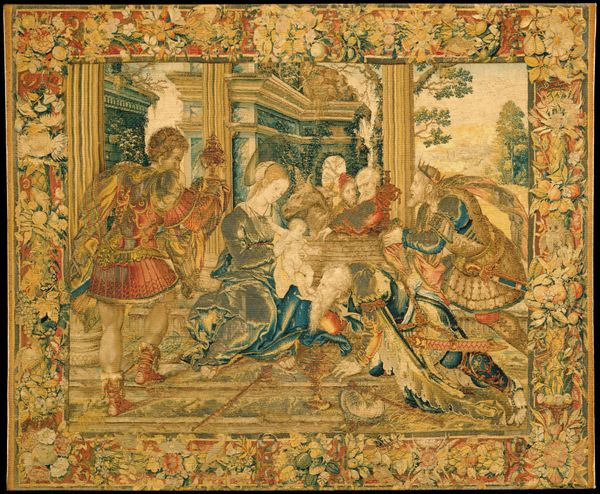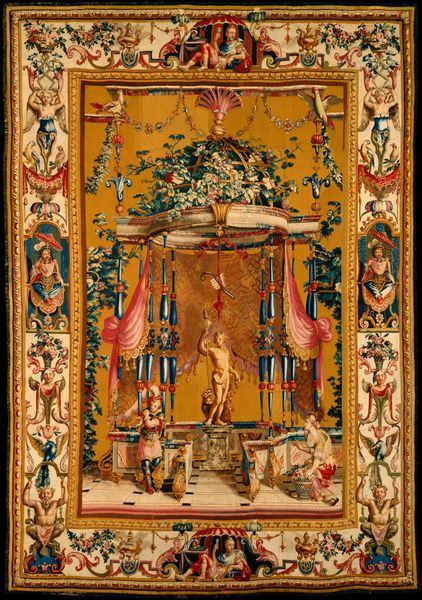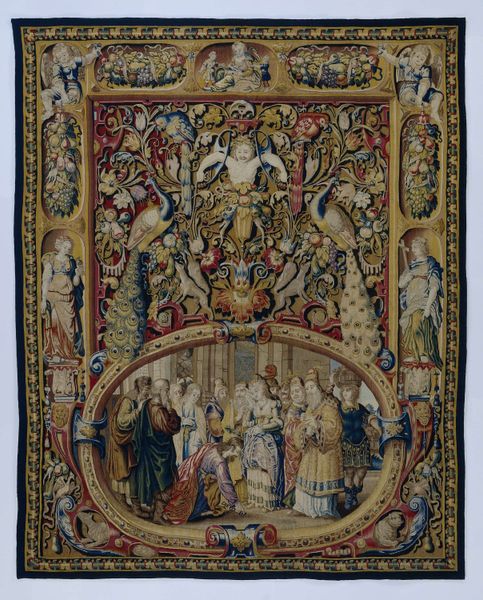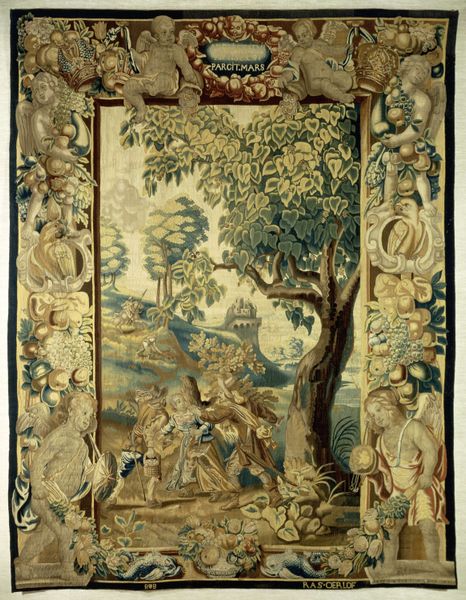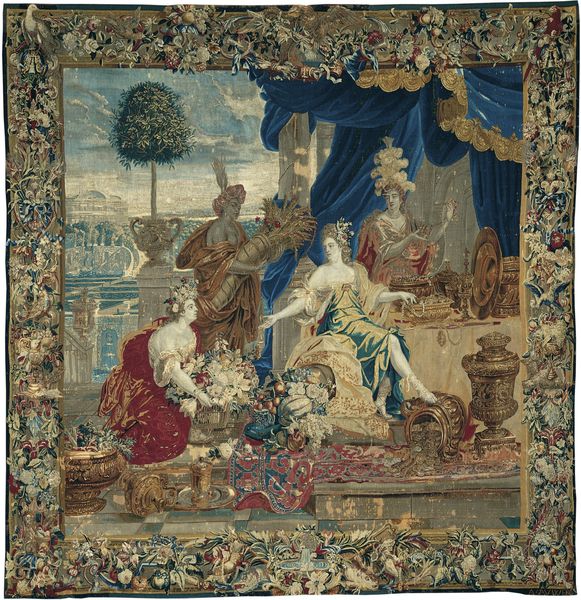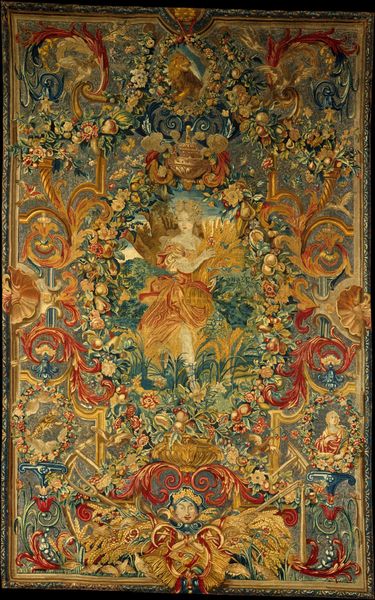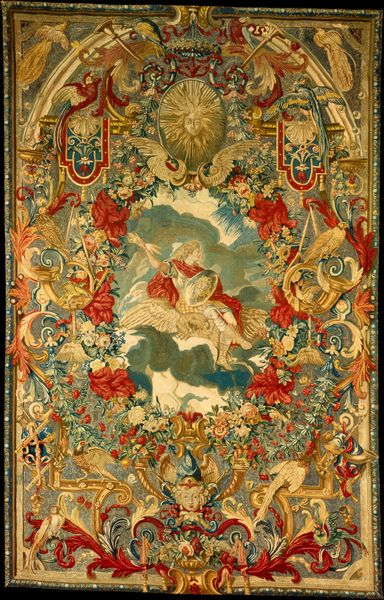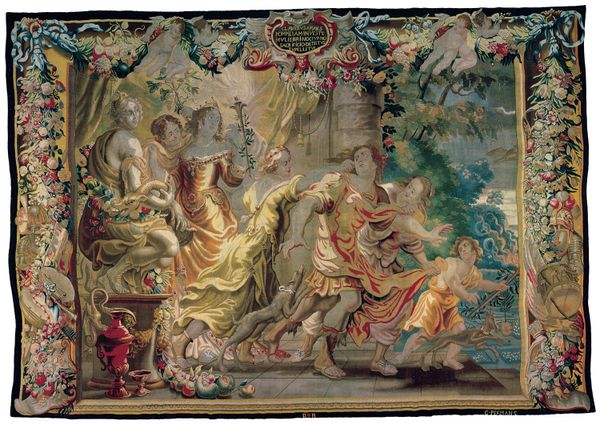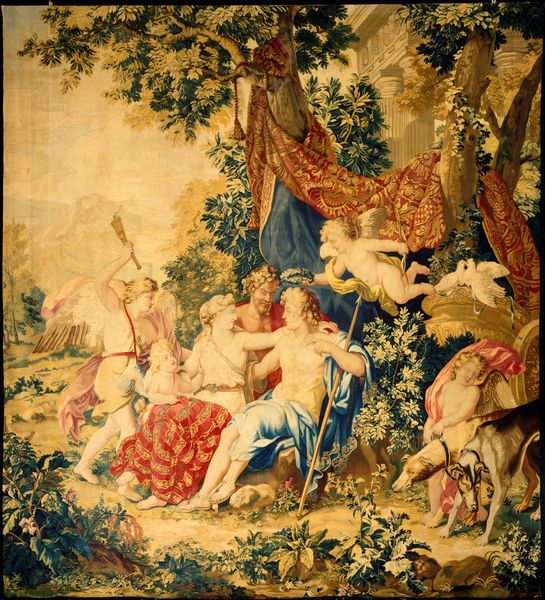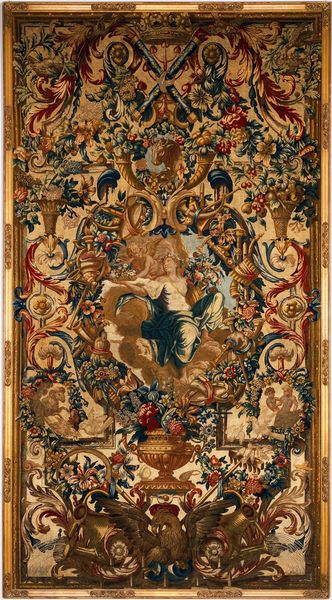
Caesar Sends a Messenger to Cleopatra from The Story of Caesar and Cleopatra c. 1680
0:00
0:00
weaving, textile, wool
#
unusual home photography
#
egg art
#
baroque
#
weaving
#
stain glass
#
textile
#
wool
#
text
#
handmade artwork painting
#
paste-up
#
tile art
#
modern period home
#
earthenware
#
history-painting
#
decorative-art
#
decorative art
#
watercolor
Dimensions: 310.1 × 363.8 cm (122 1/8 × 143 1/4 in.)
Copyright: Public Domain
Curator: Before us hangs "Caesar Sends a Messenger to Cleopatra," a wool tapestry woven around 1680 by Guilliam van Leefdael. It's currently part of the Art Institute of Chicago's collection. Editor: Wow, the density of the weave is incredible. It almost mimics the visual complexity of an oil painting but with a tangible, textile softness. Curator: Exactly! Leefdael has transformed a historical scene into a luxurious decorative object. It speaks volumes about the socio-political climate of the late 17th century, where classical narratives were repurposed to legitimize power. Think of Louis XIV, the Sun King and his deployment of classical and historical motifs. Editor: It's a deliberate assertion of wealth and status, isn’t it? All that finely spun wool and the skilled labor needed to create such a large, detailed piece… it represents a significant investment of resources. I wonder about the workshop dynamics; who were the weavers, and what were their working conditions? Curator: We see Caesar’s envoy, bearing a message for Cleopatra. This moment, chosen from their well-documented story, adds a layer of classical respectability to the owner’s image. The tapestry flattens any kind of lived Egyptian experience into Roman high art, though. Editor: And look at the rendering of Cleopatra’s gown and its relationship to the gilded, fantastical creature flanking her; I would venture to say this artist cared less for accuracy and more about luxury and symbolism! It emphasizes the tactile and ornamental quality inherent to textile production itself. Curator: It's a compelling example of how history painting got translated into the decorative arts, serving specific ideological and aesthetic needs. It makes one think about the audiences that received this imagery: what narratives did it serve, and who was kept out of them? Editor: I’m struck by how this seemingly simple scene speaks to broader issues of craft, labor, wealth, and representation. Its visual impact and the implied labour really underscore the socio-economic forces that helped create this object, so many years ago. Curator: It's amazing to think about its continuing relevance as it circulates and gains value in today's global art market. Editor: Yes! A rich confluence of history, power, and skillful artistry captured in textile form.
Comments
No comments
Be the first to comment and join the conversation on the ultimate creative platform.
